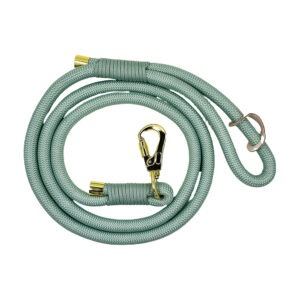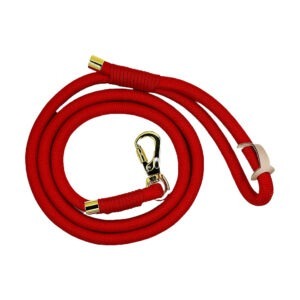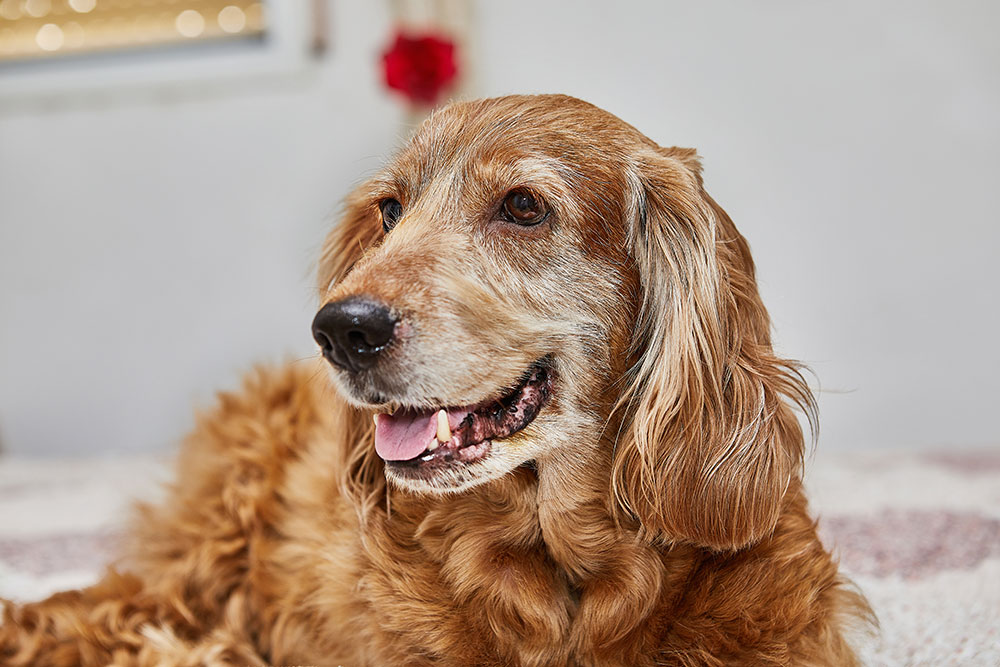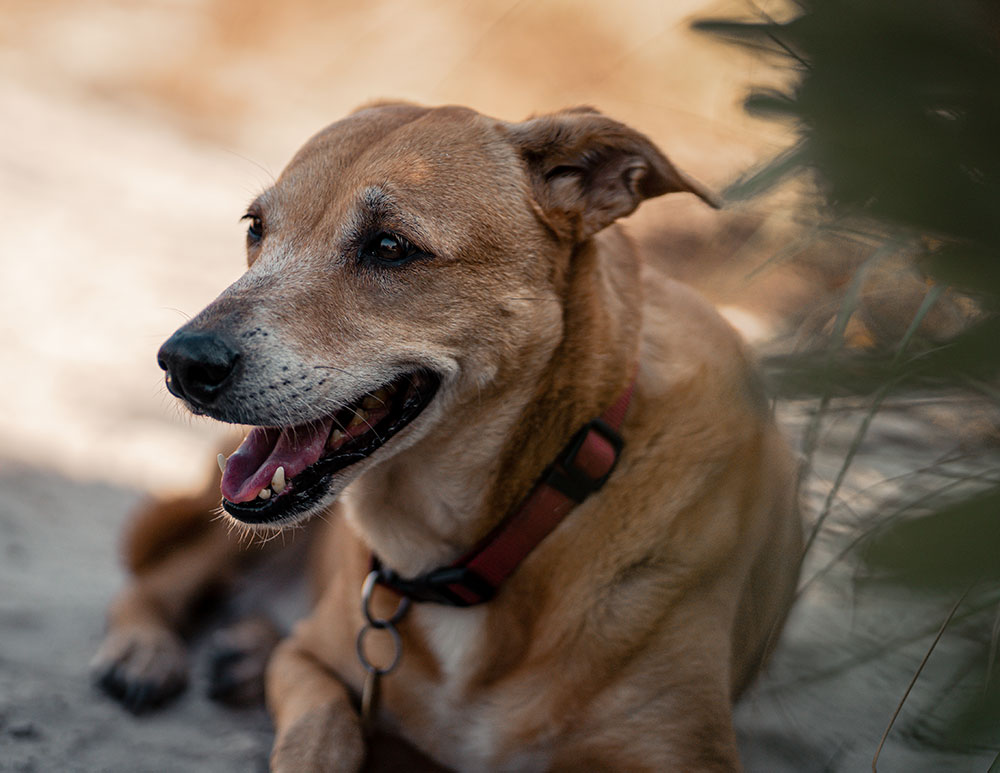Introduction
Aging can be tough on dogs. As they get older, mobility slows down, joints stiffen, and senses like hearing and vision may start to decline. These changes can make everyday life more challenging, but small home adjustments can make a big difference. Simple modifications like non-slip rugs, orthopedic bedding, and ramps can help your senior dog move around more easily and stay comfortable.
Beyond physical changes, senior dogs may also experience anxiety from reduced mobility or sensory impairments. Keeping a consistent routine, offering mental stimulation, and creating a safe, accessible environment can keep them happy and secure.
This guide will walk you through practical ways to make your home more senior-dog-friendly. Whether your dog is dealing with arthritis, vision loss, or just slowing down, these changes can help them live their golden years in comfort.
Some of our latest products...
Creating a Safe and Comfortable Living Space
As dogs age, they become more prone to slipping, joint pain, and difficulty moving around. Adjusting their living space can prevent injuries and help them feel more comfortable.
Preventing Slips and Falls
Hardwood, tile, and laminate floors can be slippery, making it harder for a senior dog to walk without losing balance. Placing non-slip rugs or yoga mats in high-traffic areas can give them better traction. If rugs aren’t an option, applying pet-safe grip tape or anti-slip floor wax can help.
Providing a Supportive Sleeping Area
Older dogs need extra joint support. An orthopedic bed with memory foam cushions pressure points and helps with arthritis. If your dog struggles to get up, choose a low-profile bed that’s easy to step onto. Keep it in a quiet, draft-free spot to ensure restful sleep.
Adjusting Food and Water Placement
Bending down too much can strain a senior dog’s neck and spine. Raised food and water bowls help maintain better posture while eating and drinking. If mobility is a concern, keep essentials in an easily accessible area so they don’t have to go far to reach them.
Modifying Stairs and Ramps
Stairs and elevated surfaces can become a major challenge for senior dogs, especially those with arthritis, hip dysplasia, or reduced strength. Making adjustments to help them navigate different levels safely can prevent injuries and reduce stress.
Adding Ramps for Easy Access
Jumping on and off furniture or climbing stairs can strain aging joints. Installing pet ramps for couches, beds, and vehicles allows dogs to move up and down safely. Look for ramps with a gentle incline and non-slip surfaces to provide extra stability. If space is limited, foldable or collapsible ramps are great options for easy storage.
Making Stairs Safer
For dogs that still use stairs, adding traction can prevent slipping. Carpeted stair treads, grip tape, or non-slip runners offer better footing. If your dog struggles with stairs entirely, consider using a pet gate to block access and prevent falls.
Alternative Solutions
If ramps or stair modifications aren’t an option, lifting small or medium-sized senior dogs can help them reach their favorite spots without straining. For larger dogs, mobility harnesses with handles allow you to assist them up steps safely.
Enhancing Accessibility for Daily Needs
As dogs age, simple daily activities like eating, drinking, and going outside can become more difficult. Making small adjustments to improve accessibility can help senior dogs maintain independence and comfort.
Easy Access to Food and Water
Senior dogs may struggle with bending down too far or reaching their bowls comfortably. Raised food and water bowls can reduce strain on their neck and spine, making mealtimes easier. For dogs with mobility issues, place their bowls in a central, easy-to-reach location to minimize unnecessary movement.
Making Outdoor Potty Breaks Simpler
Frequent bathroom trips are common for senior dogs, especially those with incontinence issues or reduced bladder control. Creating an easily accessible potty area, such as a designated patch of artificial grass or a nearby door with a ramp, can make outdoor trips less challenging. If your dog has trouble holding it in overnight, waterproof mats or washable pee pads can be useful indoors.
Keeping Essentials Within Reach
Ensure their bed, favorite resting spots, and water bowls are placed in convenient locations. If your dog has trouble walking long distances, having multiple resting areas around the home can help them avoid unnecessary strain.
Improving Visibility and Navigation for Vision-Impaired Dogs
As dogs age, their eyesight can deteriorate due to conditions like cataracts or glaucoma. This can make it harder for them to navigate their surroundings, leading to confusion, anxiety, or even injuries. Fortunately, small changes in the home can help them move around safely and confidently.
Keeping the Layout Consistent
Dogs rely on memory and scent to move around their environment. Keeping furniture, dog beds, and food bowls in the same place helps them navigate with ease. Avoid frequently rearranging furniture, as sudden changes can be disorienting.
Using Sensory Cues
Textured mats or rugs placed near doorways, stairs, or their favorite resting spots can act as location markers. These cues help dogs recognize different areas of the home. Scent markers, such as essential oils or pet-safe sprays, can also be used sparingly to guide them to important spots like their food or water bowls.
Adding Nightlights for Better Navigation
Dim lighting can make it harder for vision-impaired dogs to see, especially at night. Placing nightlights in hallways, near stairs, and around their sleeping area can help them move safely in low-light conditions.
Supporting Hearing-Impaired Senior Dogs
Hearing loss is common in senior dogs, making it harder for them to respond to verbal commands, doorbells, or familiar sounds. While this can be frustrating for both the dog and the owner, there are ways to adapt and maintain effective communication.
Using Visual and Physical Cues
Since verbal commands may no longer work, switching to hand signals can be a great alternative. Dogs are quick learners, so pairing gestures with actions—like a thumbs-up for “good job” or a sweeping motion for “come”—can help them understand instructions. Consistency is key, so use the same signals each time.
Reducing Startling Situations
A hearing-impaired dog may not notice someone approaching from behind, leading to startled reactions. To prevent this, always approach from the front where they can see you. You can also use gentle vibrations, like tapping the floor near them or lightly touching their back, to get their attention without scaring them.
Creating a Calm Environment
Loud noises may not be as bothersome anymore, but sudden movements can still cause anxiety. Keeping their space predictable and ensuring they have a quiet area to retreat to will help them feel secure.
Managing Temperature and Comfort
Senior dogs are more sensitive to temperature changes, making it important to keep their environment comfortable year-round. Whether it’s winter chills or summer heat, adjusting their living space can help them stay cozy and safe.
Keeping Warm in Colder Months
Older dogs, especially those with arthritis or thinner coats, struggle with staying warm. Provide a thick, orthopedic bed with extra blankets in a draft-free area. Heated pet beds or thermal blankets can offer additional warmth, but make sure they have a way to move away if they get too hot. If your home has cold flooring, place rugs or padded mats in areas where they rest to prevent discomfort from chilly surfaces.
Staying Cool in Warmer Weather
Heat can be just as challenging, especially for senior dogs with breathing issues or thick coats. Keep their bed in a shaded, well-ventilated area and provide cooling mats or fans to help regulate their temperature. Ensure they always have access to fresh water, and consider using elevated pet beds that allow for better airflow. If your dog spends time outdoors, create shaded rest spots and avoid walks during peak heat hours.
Avoiding Sudden Temperature Changes
Older dogs can have trouble regulating body temperature. Avoid placing their bed near radiators, air vents, or direct sunlight, as sudden exposure to extreme heat or cold can be uncomfortable. If needed, adjust room temperatures gradually to help them acclimate.
Reducing Anxiety and Enhancing Mental Stimulation
As dogs age, they can become more anxious due to reduced mobility, vision or hearing loss, and cognitive decline. Keeping their environment calm and engaging helps them feel secure and mentally sharp.
Maintaining a Consistent Routine
Senior dogs thrive on routine. Feeding, walks, and bedtime should happen at the same time each day to create predictability. Sudden changes can cause stress, so if adjustments are necessary, introduce them gradually.
Providing a Quiet and Safe Space
Loud noises or busy environments can be overwhelming. Set up a cozy, quiet space where they can rest undisturbed. If they experience separation anxiety, leaving a piece of clothing with your scent or playing soft music can provide comfort.
Keeping Their Mind Active
Mental stimulation is just as important as physical comfort. Puzzle toys, snuffle mats, and treat-dispensing games keep their brain engaged. Slow-feeders can make mealtimes more interactive while encouraging problem-solving. Simple training exercises or teaching new hand signals (for dogs with hearing loss) can also keep them mentally sharp.
Gentle Social Interaction
Older dogs may not have the same energy for play as they once did, but they still enjoy companionship. Short, gentle play sessions or slow-paced walks allow them to engage without becoming exhausted.
Regular Health and Grooming Adjustments
Caring for a senior dog involves more than just adapting the home—it also means adjusting their grooming routine and monitoring their health more closely. Regular maintenance can prevent discomfort and help detect potential health issues early.
Keeping Nails Trimmed
As dogs age, they may walk less or put less pressure on their nails, causing them to grow longer than usual. Overgrown nails can make walking painful and increase the risk of slipping. Regular nail trims help maintain proper posture and mobility. If your dog dislikes nail clipping, using a grinder or having a professional groomer trim them may be a better option.
Gentle Brushing and Coat Care
Senior dogs may develop thinner coats or more sensitive skin. Brushing regularly helps prevent matting and distributes natural oils, keeping their coat healthy. For dogs with arthritis, use a soft-bristle brush or grooming glove to avoid putting pressure on sore joints.
Monitoring Dental Health
Dental issues become more common with age, leading to pain, infections, and difficulty eating. Regular tooth brushing with dog-safe toothpaste and dental chews can help reduce plaque buildup. If bad breath or difficulty chewing becomes noticeable, a vet visit may be needed.
Watching for Changes in Weight and Mobility
Unexpected weight gain or loss, stiffness, or reluctance to move can signal health issues. Regular vet check-ups (at least twice a year) allow for early detection of arthritis, thyroid problems, or other age-related conditions.
Frequently Asked Questions (FAQs)
How can I help my senior dog with arthritis move around more easily?
Provide orthopedic beds for joint support, install ramps for furniture and stairs, and use non-slip rugs on hard floors. Gentle exercise, like short walks or hydrotherapy, can also help maintain mobility.
What type of bed is best for a senior dog?
An orthopedic memory foam bed is ideal because it cushions pressure points and provides joint support. Look for a low-profile option that’s easy for your dog to step onto, and choose one with a washable cover for easy cleaning.
How can I make my home safer for a blind dog?
Keep furniture in the same place to avoid confusion, use textured rugs as location markers, and add nightlights to improve visibility. Block off dangerous areas, such as stairs, with baby gates.
My senior dog is losing hearing. How do I communicate with them?
Use hand signals for commands, approach them from the front to avoid startling them, and use vibrations (like tapping the floor) to get their attention. A flashlight or light signals can also help guide them.
How often should I take my senior dog to the vet?
Senior dogs should have check-ups at least twice a year. More frequent visits may be necessary if they have ongoing health conditions or sudden changes in behavior, mobility, or appetite.








